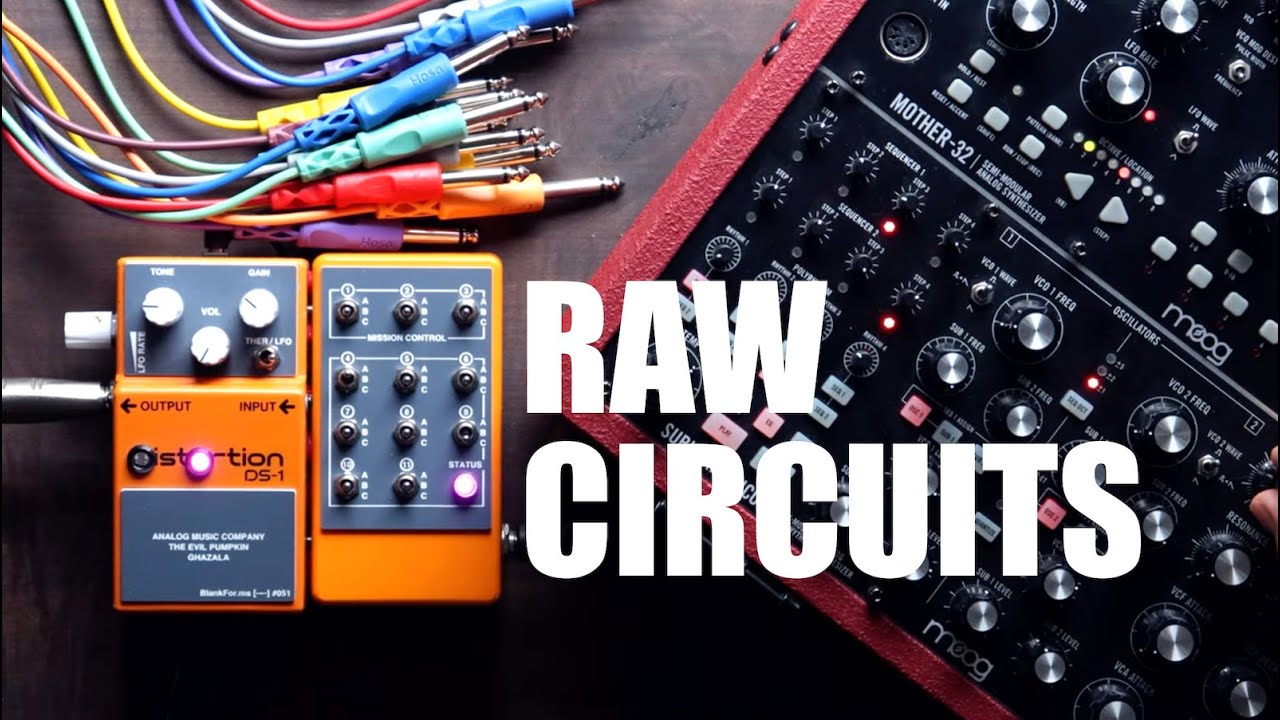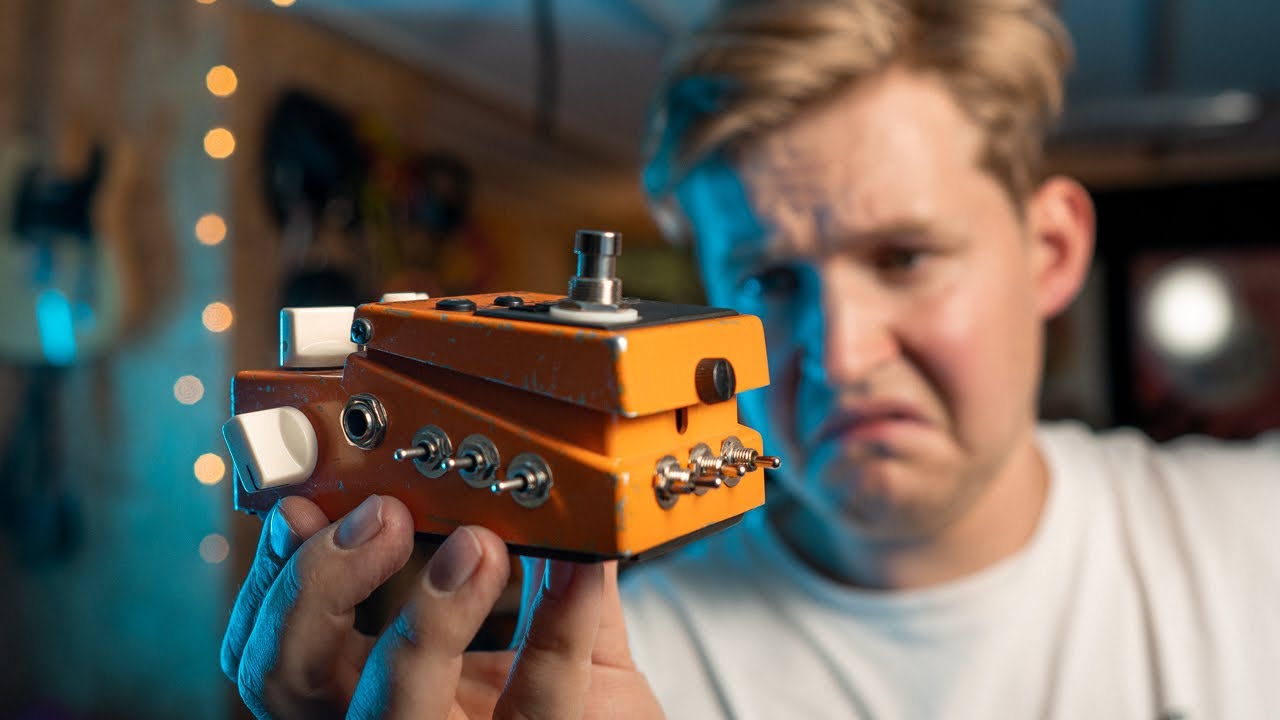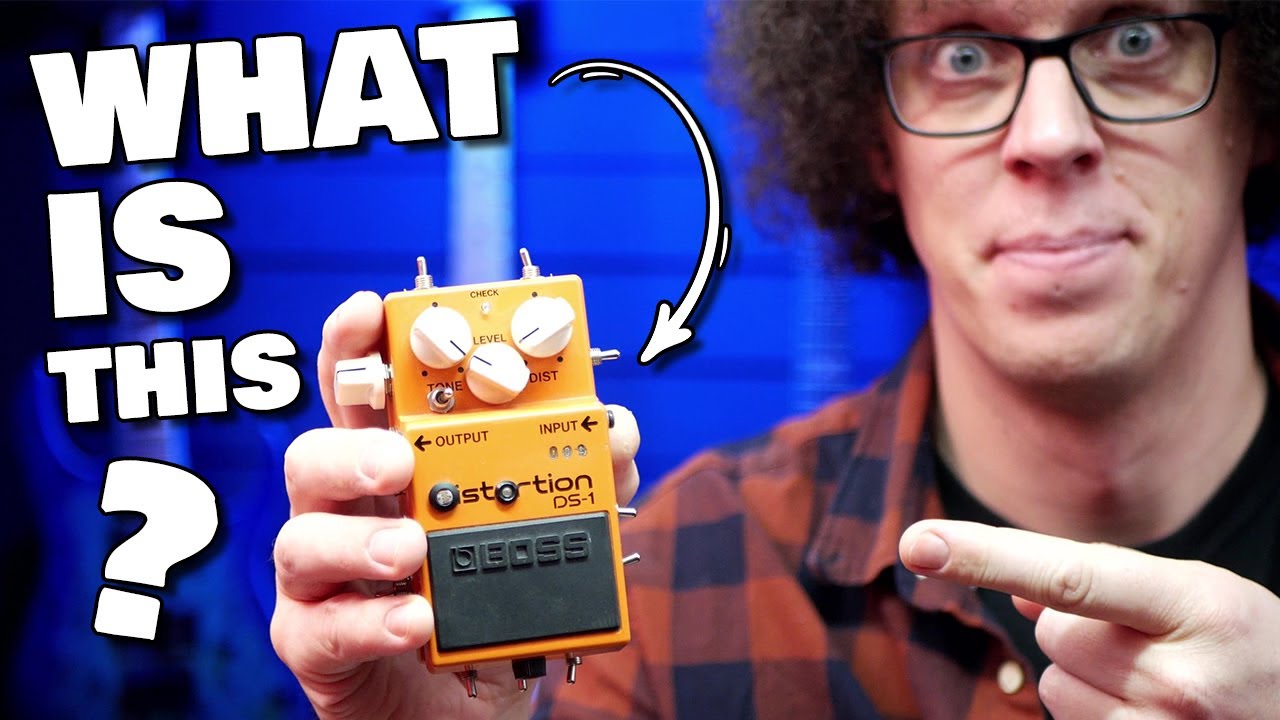THE EVIL PUMPKIN: The Ultimate Circuitbent Machine
The Evil Pumpkin Overview
What it is:
This is our most famous and experimental pedal. It's essentially a heavily modified and "circuit-bent" version of a classic distortion pedal: Boss DS-1
The Sound:
It's a sonic chaos engine. It can produce everything from aggressive, glitchy fuzz to wild, modulated drones and synth-like pulses. It's a tool for sound design as much as it is a guitar effect.
Who it's for:
If you are an experimental musician, a noise artist, or someone who wants a pedal with a massive, unpredictable palette of extreme sounds, this is the one. (A new version is being released soon!)
The Evil Pumpkin Highlights
The Evil Pumpkin Ghazala, a tabletop instrument and synthesizer, functions as a versatile noise machine capable of producing drones, fuzz, synth, distortion, and glitch effects.
The Evil Pumpkin Is an Instrument: Oscillator, Theremin, Drone, Synthesizer, Fuzz
It is a noise machine to be used for sound design. Evil Pumpkin introduces a lot of unique sounds: drones, fuzz, synth, distortion & glitch effects.
Circuitbent DS-1 Project Approved By Reed Ghazala
Each switch corresponds to a predefined DS-1 circuit connection point, creating various sonic possibilities. Reed has the serial number 001 and loves it!
Experimental Sound Device for Stage & Studio
This is something you can easily use score the most messed up apocalyptic road movies, or just add echo and play only this at your next noise show.
Exploring The Evil Pumpkin & Its Features
FEATURES:
- The new (double) format
The idea of the additional block is the same as a patchbay on the synth (Moog synths for example). It is much more logical and user friendly. You can easily see the positions of the switches, manipulate & document them effortlessly and systematically which provides a much better experience compared to the previous models. - The function of the switches
Imagine that you are bending yourself, and each position of the switches is a point that can be connected to another one. Or, the switches can be approached as a patchbay of a synthesizer. Practically, they connect different predefined points in a circuit, establishing new connections not intended by the original DS-1 design. You cannot tell that switch 1 is for fuzz and switch 2 is for overdrive. Instead, switch 1 connects R1 to R3, but the effect it will produce in combination with the other switches is impossible to predict. - How many sound combinations are there in the Evil Pumpkin and are all of them usable?
There are 12^3 combinations which makes it 1728 possible variations.Not all of them are usable, definitely. This is a part of a design since the project has a circuit bending roots. - Combining the Evil Pumpkin with other instruments
The Evil Pumpkin is great when combined with various instruments such as guitar, bass, synths, and drum machines. Moreover, it serves as an excellent source for samples in both noise-based and sample-based music. - Built in LFO
The Evil Pumpkin features its own LFO circuit responsible for generating repeating sound patterns or pulsations. It offers variable speed, which is controlled by a separate knob. - Photocell/Theremin
You can interact with the Evil Pumpkin using the Photocell input, which controls the pitch of the oscillations.
CONTROLS:
- Tone: This knob controls the tone of the distortion sounds. Rotating the knob clockwise cuts lower frequencies, creating sharp sounds. Rotating the knob counterclockwise cuts higher frequencies, creating softer, warmer sounds. We have altered the value of the tone knob to make darker tones achievable. When the circuit becomes bent, its operation might vary, including reverse operation, no effect, or a change in the pitch of the oscillations.
- Vol: Sets the overall output volume. It remains active when all the switches are in the neutral position but might become inactive once the switches are manipulated (i.e., the circuit becomes bent).
- Gain: Rotate clockwise to increase the amount of gain/distortion. The knob operates as standard when all the switches are in the neutral position. However, when the circuit becomes bent, its operation might vary, including reverse operation, no effect, or a change in the pitch of the oscillations. To maximize the drone function of the Evil Pumpkin, the GAIN knob has to be maxed out.
- THER/LFO Switch: This switch allows you to choose how to interact with the Evil Pumpkin Ghazala. The switch functions as follows:
LEFT: A PHOTOCELL is engaged (theremin-like function).
CENTER: Both PHOTOCELL and LFO are off.
RIGHT: An LFO is engaged (tremolo-like function).
To use either THER or LFO, you have to engage one of the switches in the MISSION CONTROL section. You can try any of the following settings:
1A
1C
2A
2C
1A+2C
1A+2B or other combinations you might discover.
A recommended starting point is setting the GAIN KNOB to max (as most drones will require you to max the GAIN KNOB to work).
The Evil Pumpkin can be turned on or off, and the THER/LFO will remain operational, but the sound will change accordingly.
THER/LFO will work regardless of whether the input jack is plugged or unplugged. However, leaving the input jack unplugged is recommended when the Evil Pumpkin is used as a standalone sound generator/drone. - The Mission Control Section (Switches 1, 2 & 3) is responsible for drones. A good place to start is with the following combinations:
1A+2C
1A+2A
1A+2B
Either THER or LFO has to be selected.
GAIN has to be maxed out for the best results.
You can use drones without switching the Evil Pumpkin on (STATUS light is off); the LFO schematic will still be active and able to produce sounds.
Switching the Evil Pumpkin on will most likely change the sound of the drone.
Plugging in the input jack will decrease the drone volume. Therefore, for drone-only use, it is recommended to leave the input jack unplugged. - The LFO Rate Knob is located on the left side of the DS-1 part of the Evil Pumpkin. This knob is responsible for controlling the speed of LFO pulsations, similar to the RATE KNOB on a tremolo pedal. It becomes active when the LFO is selected using the THER/LFO SWITCH.
Turning the knob counterclockwise will increase the LFO rate, making the pulsations faster.
Turning the knob clockwise will decrease the LFO rate, slowing down the pulsations. - The LFO Rate Indicator is connected with the LFO RATE KNOB and visualises the currently selected speed of the LFO.
The LFO RATE INDICATOR starts flashing when the Evil Pumpkin power jack is plugged in.
The LFO RATE INDICATOR will keep flashing & showing the LFO RATE regardless if the LFO is actually active or not. - The Photocell is an element that allows you to control the pitch of the oscillations of the Evil Pumpkin Ghazala, providing a theremin-like effect. To engage the Photocell, select THER on the THER/LFO SWITCH.
In order to make the Photocell work, you will also need to engage the switches on the MISSION CONTROL section in a way that the Evil Pumpkin starts producing a drone sound. Additionally, you may have to maximize the GAIN KNOB for the most pronounced effect.
The Photocell is controlled by feeding light to the sensor. You can use any light source you like, ranging from the ambient light in the room to direct light from a mobile phone flashlight, etc. - Switches 1-11: Each of the switches corresponds to a predefined point in the circuit it will connect. Each switch has 3 positions: up (A) and down (C) are connected to the circuit, while the center (B) position is off. The switches do not have a predefined function; they only determine the points in the circuit you are going to connect. By connecting various points of the circuit, you are bending it, which will change the behavior of all the main controls and the sound of the Evil Pumpkin Ghazala. You can think of it as connecting various points using jumper cables, but instead of the cables, you have the prewired switches.
Demo 1
Demo 2
Demo 3
Demo 4
Demo 5
Evil Pumpkin F.A.Q.
What is the Evil Pumpkin?
What's up with the new (double) format as seen on the Evil Pumpkin Ghazala?
How many sound combinations are there in the Evil Pumpkin and are all of them usable?
Not all of them are usable, definitely. This is a part of a design since the project has a circuit bending roots.
How do I remember the settings I like with all these switches?
We are also making them available for a free download in PDF format so that you can print them out anytime you want.
What do the switches do?
You can not tell that switch 1 is for fuzz and switch 2 is for overdrive. Rather switch 1 connects R1 to R3, but what effect it will give in combination with the other switches - it is impossible to tell.
Is it a true bypass?
We found out that the true bypass limits the sound palette the pedal is capable of (gate fuzz, sub bass drones, etc).
For the true bypass you will need a Boss LS-2 or a Keeley true bypass pedal which are affordable and very useful for many applications.
Some switches kill the sound, is it normal?
I can hear a popping sound while clicking some of the switches?
Is it sturdy enough?
Will the Evil Pumpkin work with bass?
You say the Evil Pumpkin is a studio/tabletop instrument, can I use it live?
Even bypassed the Pumpkin changes the sound or doesn't let the sound through. Is it normal?
With some combinations of switches the knobs become inactive, is it normal?
Can you add a true bypass and master volume?
For this reason we recommend using a Boss LS-2 or a true bypass looper with the Pumpkin.
downloads
Evil Pumpkin Patch Sheet





